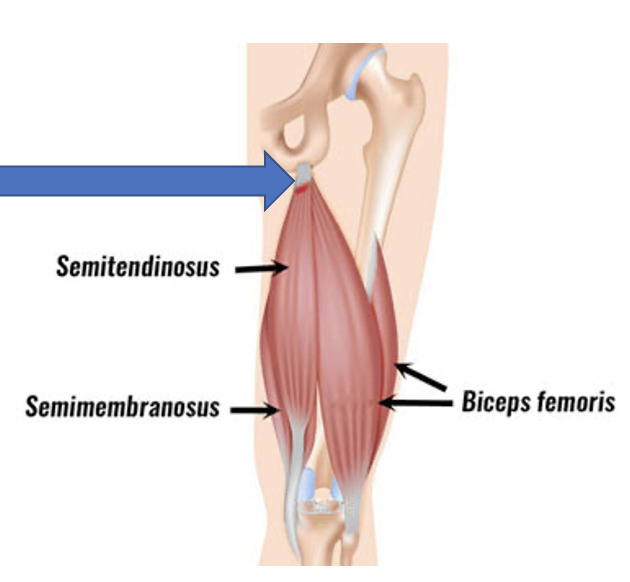Hamstring Tendonitis: Hamstring Injury And Hamstring Syndrome Treatment
 The hamstring muscle group consists of three muscles with respective tendons. The proximal hamstring tendons attach the hamstring muscles to the pelvis and femur. The distal hamstring tendon and muscles connect to the knee joint at the proximal tibia and fibula. Tendon injury to the proximal hamstring is a common cause of hamstring pain. Hamstring tendon inflammation is called tendinitis, while chronic tendonitis and degeneration is hamstring tendinopathy.
The hamstring muscle group consists of three muscles with respective tendons. The proximal hamstring tendons attach the hamstring muscles to the pelvis and femur. The distal hamstring tendon and muscles connect to the knee joint at the proximal tibia and fibula. Tendon injury to the proximal hamstring is a common cause of hamstring pain. Hamstring tendon inflammation is called tendinitis, while chronic tendonitis and degeneration is hamstring tendinopathy.
The hamstring. muscles with the exception of the short head of the biceps femoris all attach to the pelvis as one common tendon, which when inflamed is called proximal hamstring tendonitis or tendinopathy. The proximal or high portion of the hamstring tendon is the most location of injuries such as a strain, tear, or with trauma, avulsions of the bone. The hamstring can also cause pain behind the knee if the tendonitis is the result of a knee injury.
Muscles include:
- The long and short head of biceps femoris
- Semitendinosus
- Semimembranosus
Causes
Proximal tendonitis of the hamstring occurs when the tendon develops inflammation from micro-tears that are common in repetitive motion sports involving the hip and knee (running). Tendonitis generally occurs when a specific movement is repeated with enough frequency to strain the tendon beyond the tendons’ ability to heal, tendonitis, and hamstring pain occur. If the tendon pain continues over a long period of time then inflammation stops, tendon degeneration can occur known as tendinopathy. This is true for both the proximal tendon and the distal hamstring knee tendons.
Symptoms
Micro tearing process or the start of tendonitis, pain in the butt or buttocks near the ischial tuberosity (sits bone) or knee pain are the primary symptoms.
Hamstring Strain with tendinitis symptoms include:
- Hamstring pain at the proximal attachment (buttocks)
- Pain radiating down the hamstring to the knee
- Hamstring pain that is made worse by exercises or stretching
- Hamstring muscle weakness
- Can cause sciatica or sciatic nerve pain
- Pain behind the knee
- Upper calf pain
Treatment
Treatment for tendonitis is always non-surgical, and responses well to conservative exercises and manual therapy that focuses on reducing strain on the tendon and aids in healing.
The RICE method is often given for self-treatment, but overall effectiveness is pretty poor.
Treatments that are up to date (2022) include:
- Hamstring strengthening exercises- Isometric first, then concentric and eccentric last
- Pelvic positioning exercises- When the hip joint is poorly aligned with the pelvis (anterior tilt) it makes the hamstring muscle and tendon longer and increases the strain. This increases the risk of tendonitis. Dead-bug exercise is effective at teaching hip and pelvic alignment awareness.
- Butt or buttocks exercises- The hamstrings and gluteal muscles work together. When gluteal muscles are weak, the hamstring muscles have to work harder to produce hip extension, which could lead to tendonitis.
- Sciatic nerve Flossing- sciatic nerve pain often occurs with proximal tendonitis
GET IN TOUCH WITH DR. DEAN
YOU should be able to move the way you’d like to move without experiencing pain. YOU should be able to experience freedom and energy knowing there’s nothing holding back from giving your life 110%. Dr. Dean would like to learn more about your challenges with a quick phone or email before beginning treatment. Contact him today.
